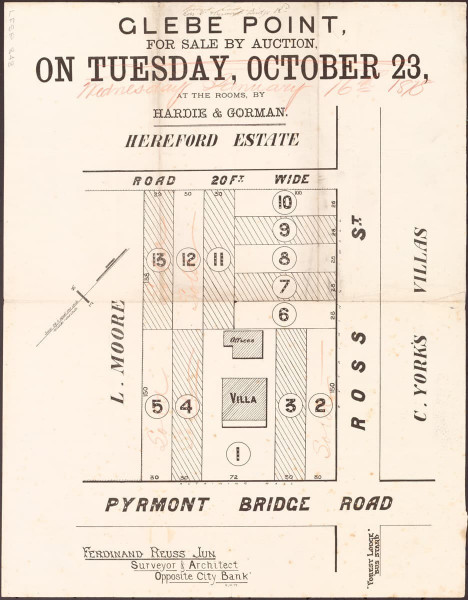This single-storey six-room shingle-roofed brick villa was built by Ambrose Foss as an investment in 1838. On more than an acre of land, it was first known as Albion Cottage and tenanted by corn and spirit merchant and broker Edward Hutchinson Pollard. In 1840 Pollard borrowed money to buy the renamed Rose Cottage. In 1841 his mortgage was transferred to landowner John Terry who died the next year.
Terry’s executors foreclosed on the property after Pollard was declared bankrupt. In 1848, again insolvent, Pollard was allowed to keep his furniture, clothing and two watches. While involved in protracted insolvency proceedings he continued to lease Rose Cottage until 1857 when he was hopelessly in debt and moved to Derwent Street. Pollard died in Queensland in 1878. His namesake son became Hong Kong’s first Queen’s Counsel.
In 1854 John Terry’s son Samuel Henry turned 21, and two years later Rose Cottage was in his hands. Samuel Terry became a prominent politician and landowner with considerable city, suburban and country real estate in New South Wales as well as holdings in New Zealand and Queensland.
In 1866 Edmund Walcott Fosbery, the colony’s second Inspector-General of Police, moved from Redfern to Rose Cottage and lived there until late 1874 when he was appointed to the top job. The Fosbery family then took up residence in The Cottage (now absorbed by Central Station) where they kept poultry and a cow and built a tennis court and bowling green.
Samuel Terry had the Forest Lodge land subdivided in 1877 and put up for auction. There was interest from school inspector Frederick Bridges but the offer was too low and the property was passed in. Renamed Laira, it was then occupied by Caroline Payne who kept goats and offered cheap lodgings in return for music lessons. Thomas Wallace and his wife lived there before the cottage was demolished. The land is now part of Forest Lodge Public School.




